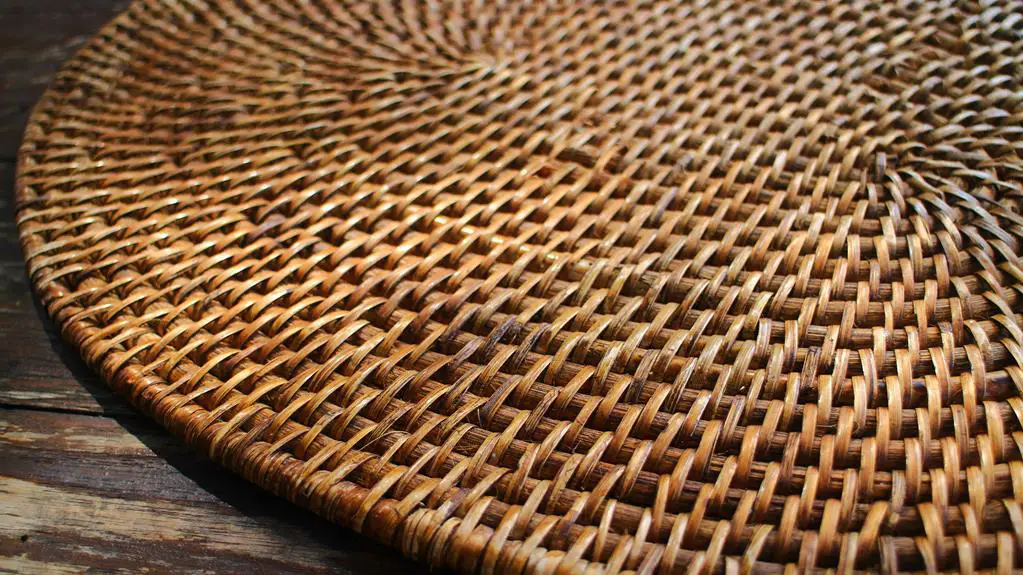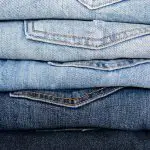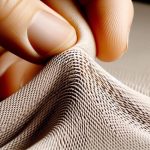When you're in the market for bamboo fabric, it's crucial to know what sets quality apart from the rest. You'll encounter various types like bamboo viscose and lyocell, each with distinct characteristics. It's not just about the feel; consider the processing methods and certifications that indicate sustainability. By knowing what to look for, you can make choices that reflect your values, but it can be overwhelming. So, how do you navigate through the options without getting lost? Let's break it down step by step.
Table of Contents
Key Takeaways
- Identify the type of bamboo fabric: Bamboo Viscose, Lyocell, and Linen each offer unique qualities suited for different uses.
- Check for quality certifications like GOTS and OEKO-TEX to ensure organic sourcing and safety from harmful substances.
- Evaluate the processing methods: prefer mechanically processed bamboo for eco-friendliness over chemically processed options with higher environmental impacts.
- Assess softness and durability by comparing fabric samples, as high-quality bamboo should feel smooth and maintain its integrity over time.
Understanding Bamboo Fabric Types
When exploring bamboo fabric types, you'll find that not all bamboo textiles are created equal, each offering unique qualities and benefits. The main types of bamboo fabric include bamboo viscose, bamboo lyocell, and bamboo linen. Understanding these differences can help you make an informed choice for your needs.
Bamboo viscose is the most common type you'll encounter. It's made through a chemical process, resulting in a soft, silky texture. This fabric is highly breathable and moisture-wicking, making it ideal for clothing and bed linens. However, its production can raise sustainability concerns due to the chemicals involved.
Bamboo lyocell, on the other hand, uses a more eco-friendly process, utilizing a closed-loop system that recycles water and solvents. As a result, it's softer and more durable than viscose, with excellent moisture management properties.
Bamboo linen is another option, derived from the bamboo plant's pulp. It has a rougher texture and is more absorbent, making it suitable for towels and home textiles. Each type has its own distinct feel and functionality, so think about what best suits your lifestyle when selecting bamboo fabric.
Processing Methods Explained
Understanding the processing methods behind bamboo fabric types is key to identifying quality materials that align with your values and needs. The two primary methods for processing bamboo into fabric are the mechanical process and the chemical process.
In the mechanical method, bamboo is crushed and naturally processed into fibers without harsh chemicals. This method is eco-friendly, resulting in a fabric often labeled as “bamboo linen.” It retains more of the bamboo's natural properties and is generally softer and more breathable. However, this process can be more labor-intensive and may yield a smaller amount of fabric.
On the other hand, the chemical method involves using chemicals like sodium hydroxide to break down the bamboo. This process creates a smoother and more versatile fabric, often referred to as “bamboo viscose” or “bamboo rayon.” While it's softer and more widely available, the environmental impact and the use of chemicals may not align with your sustainability values.
When choosing bamboo fabric, consider which processing method resonates with you, as it impacts both the fabric's quality and its ecological footprint. Be mindful of how these processes reflect in your final choice!
Recognizing Quality Certifications
To ensure you're getting high-quality bamboo fabric, look out for key certifications that guarantee sustainable and ethical production practices. One of the most recognized certifications is the Global Organic Textile Standard (GOTS), which ensures that the fabric is made from organic fibers and meets stringent environmental and social criteria.
Another important certification is the OEKO-TEX Standard 100, which tests for harmful substances and ensures that the fabric is safe for human use. If you see this label, you can be confident that the bamboo fabric is free from harmful chemicals.
You might also come across the Forest Stewardship Council (FSC) certification. This label signifies that the bamboo is sourced sustainably, promoting responsible forest management. When you choose bamboo fabric with these certifications, you support eco-friendly practices and ethical labor conditions.
Lastly, look for brands that are transparent about their sourcing and production methods. Companies committed to quality often share their certifications on their websites or product labels, making it easier for you to make informed choices. By paying attention to these certifications, you can ensure your bamboo fabric is both high-quality and responsibly produced.
Evaluating Softness and Durability
After ensuring your bamboo fabric has the right certifications, the next step is to evaluate its softness and durability. You want fabric that feels luxurious against your skin and can withstand everyday use.
To assess softness, run your fingers over the fabric. High-quality bamboo should feel smooth and silky, not rough or scratchy. Don't hesitate to compare different samples to find the best one.
When it comes to durability, consider the fabric's weight and weave. A denser fabric often indicates better durability. Below is a comparison of different types of bamboo fabric:
| Type of Bamboo Fabric | Softness Level | Durability Rating | Common Uses |
|---|---|---|---|
| Bamboo Viscose | Very Soft | Moderate | Clothing, Bedsheets |
| Bamboo Lyocell | Ultra Soft | High | Activewear, Underwear |
| Bamboo Cotton Blend | Soft | Moderate | Casual Wear |
| Bamboo Linen | Rougher | Very High | Home Textiles |
Environmental Impact Considerations
When choosing bamboo fabric, it's crucial to consider its environmental impact, as not all bamboo production methods are equally sustainable. Bamboo is often touted as an eco-friendly option due to its rapid growth and minimal need for pesticides. However, the process used to convert bamboo into fabric can be harmful if not done responsibly.
Many manufacturers use a chemical process involving toxic solvents, which can lead to significant environmental pollution. When researching brands, look for those that employ a closed-loop system, where the chemicals are recycled and reused, minimizing waste and harmful emissions. Certifications like OEKO-TEX® can also indicate that the fabric has been tested for harmful substances.
Additionally, consider the source of the bamboo. Bamboo grown in regions with sustainable forestry practices is a better choice. Always check if the brand provides transparency about their sourcing and production methods.
Tips for Responsible Purchasing
When you're shopping for bamboo fabric, it's essential to make informed choices.
Look for sustainable brands that prioritize eco-friendly practices, and don't forget to check for certifications and labels that ensure quality.
Also, evaluate the production methods to ensure you're supporting responsible manufacturing processes.
Research Sustainable Brands
To make responsible purchases, you should research brands that prioritize sustainability and ethical practices in their bamboo fabric production.
Begin by looking for companies that openly share their sourcing and manufacturing processes. Brands committed to sustainability often provide detailed information on how they grow, harvest, and process their bamboo.
Next, check if they use environmentally friendly methods, like closed-loop production systems, which minimize waste and pollution. Look for brands that practice responsible forestry, ensuring that bamboo is sourced from sustainable farms that don't harm local ecosystems.
Additionally, support companies that treat their workers fairly. Ethical brands often highlight their commitment to fair wages and safe working conditions. You can also explore customer reviews and third-party endorsements to gauge their reputation.
Lastly, consider the brand's overall mission. Companies with a strong sustainability focus typically integrate eco-friendly practices across their entire operation, from production to packaging.
Check Certifications and Labels
Checking for certifications and labels can help you ensure that the bamboo fabric you choose meets high standards for sustainability and ethical production. These credentials provide insight into how the fabric is made and the environmental impact of its production.
When you're shopping for bamboo fabric, look for reputable certifications that indicate responsible sourcing and manufacturing practices.
Here are some key labels to keep an eye out for:
- OEKO-TEX Standard 100: This certification assures that the fabric is free from harmful substances and safe for human use.
- Global Organic Textile Standard (GOTS): This label guarantees that the bamboo is sourced organically and that the entire production process adheres to strict environmental and social criteria.
Evaluate Fabric Production Methods
Understanding the production methods used for bamboo fabric is key to making responsible purchasing decisions that align with your values. Bamboo can be processed in various ways, but not all methods are eco-friendly or sustainable. The two main processes are mechanical and chemical.
Mechanical processing involves crushing the bamboo and using natural enzymes to break down the plant into fibers. This method is more environmentally friendly, as it avoids harmful chemicals. When shopping, look for brands that use this method, as it often results in a higher-quality fabric.
On the other hand, many companies use a chemical process, which involves treating bamboo with harsh chemicals like sodium hydroxide. While this method can be cheaper and quicker, it often raises concerns about environmental impact and worker safety. If you find fabric labeled as 'bamboo rayon' or 'bamboo viscose,' it's likely produced using chemicals.
To ensure you're making responsible choices, research the brands you're considering. Ask questions about their production methods and look for transparency in their practices. By understanding how bamboo fabric is made, you can feel confident that your purchase aligns with your sustainability values.
Frequently Asked Questions
Is Bamboo Fabric Suitable for Sensitive Skin?
Yes, bamboo fabric's natural properties make it great for sensitive skin. It's soft, breathable, and hypoallergenic, reducing irritation. You'll likely find it comfortable and soothing, perfect for anyone prone to skin sensitivities.
How Does Bamboo Fabric Compare to Cotton in Terms of Breathability?
Bamboo fabric generally offers better breathability than cotton, allowing moisture to evaporate quickly. You'll notice it feels cooler and more comfortable against your skin, making it a great choice for warm weather or active wear.
Can Bamboo Fabric Be Machine Washed?
Yes, you can machine wash bamboo fabric! Just use a gentle cycle with cold water and mild detergent to keep it soft and prevent damage. Avoid bleach and high heat to maintain its quality.
What Is the Typical Lifespan of Bamboo Fabric Products?
Bamboo fabric products typically last around three to five years with proper care. You should wash them gently and avoid harsh chemicals to extend their lifespan, ensuring you enjoy their softness and durability for longer.
Are There Any Allergens Associated With Bamboo Fabric?
Bamboo fabric is generally hypoallergenic, so it's unlikely to cause allergic reactions. However, if you have sensitivities, it's wise to test a small swatch first to ensure it doesn't irritate your skin.






